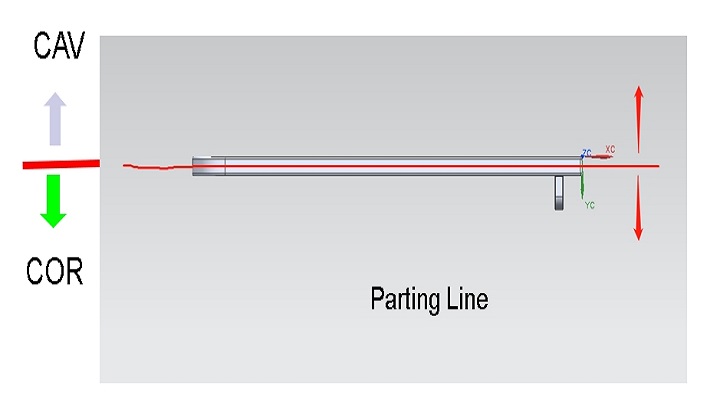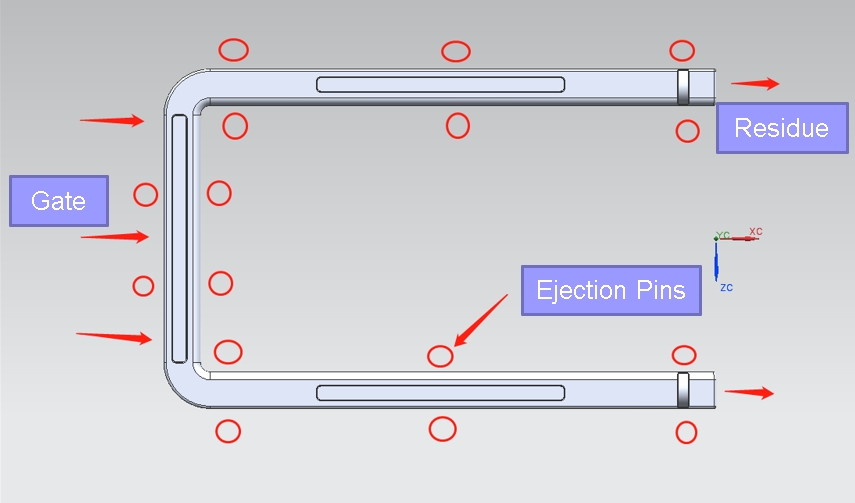VIII. Case Studies and Examples of Die Casting Productivity
Real-world case studies provide invaluable insights into successful die casting designs. These case studies are engineering narratives that showcase the application of specific design principles in challenging scenarios. Advanced engineering analyses of these examples unveil the strategies employed to overcome unique design challenges, highlighting innovative solutions. Learning from these industry best practices empowers engineers to navigate complexities and optimize their die casting processes with informed precision.
Case Study 1: Enhancing Efficiency Through Innovative Tooling Design
A. Background:
A prominent die casting manufacturer faced challenges with cycle times, tool wear, and part quality in a high-volume production setting. The existing tooling design was struggling to meet the demands of precision and efficiency required by their automotive component production.
B. Approach:
The engineering team initiated a comprehensive analysis of the existing tooling design and identified critical areas for improvement. Leveraging advanced simulation software, they optimized the mold design, focusing on:
- Enhanced Cooling Channels: Redesigned cooling channels to improve heat dissipation, reduce cycle times, and minimize thermal-related defects.
- Material Selection: Upgraded tool materials to high-performance alloys with increased wear resistance, prolonging the operational life of the molds.
C. Results:
The optimized tooling design led to remarkable improvements:
- Cycle Time Reduction: Achieved a significant reduction in cycle times, resulting in increased production efficiency.
- Improved Part Quality: Enhanced part surface finish and dimensional accuracy, reducing the need for secondary operations.
- Extended Tool Life: The upgraded tool materials contributed to a substantial increase in tool life, minimizing downtime and maintenance costs.
Case Study 2: Precision Die Casting for Electronic Components
A. Background:
A leading electronics manufacturer faced challenges in producing intricate and complex die-cast components for their latest electronic devices. The existing die casting process struggled to meet the precision requirements and maintain high yields.
Approach:
The manufacturer implemented a precision die casting approach, focusing on:
- Advanced Mold Design: Utilized state-of-the-art mold design software to create intricate and highly detailed molds, ensuring precise replication of electronic component features.
- High-Pressure Die Casting: Adopted high-pressure die casting techniques to achieve tighter tolerances and minimize porosity in the cast components.
C. Results:
The precision die casting initiative led to notable outcomes:
- Increased Yield: Achieved higher yields of defect-free components, reducing scrap and improving overall production efficiency.
- Consistent Quality: Enhanced dimensional accuracy and surface finish, meeting the stringent quality requirements of electronic devices.
- Streamlined Production: The advanced mold design and high-pressure die casting techniques streamlined the production process, resulting in shorter lead times.
Case Study 3: Transition to Lightweight Materials in Automotive Die Casting
A. Background:
An automotive component manufacturer sought to address the growing demand for lightweight materials to improve fuel efficiency in vehicles. The challenge was to transition from traditional materials to lightweight alloys without compromising structural integrity.
B. Approach:
The manufacturer undertook a strategic transition to lightweight materials, focusing on:
- Material Evaluation: Conducted a comprehensive evaluation of lightweight alloys, considering factors such as strength, durability, and die castability.
- Process Optimization: Modified die casting parameters to accommodate the unique characteristics of lightweight alloys, ensuring optimal casting results.
C. Results:
The transition to lightweight materials brought about significant advancements:
- Fuel Efficiency Improvement: The use of lightweight alloys contributed to reduced vehicle weight, enhancing fuel efficiency and meeting regulatory standards.
- Material Cost Savings: Despite the initial investment in material evaluation, the long-term benefits included reduced material costs due to the efficiency of lightweight alloys.
- Competitive Advantage: Positioned the manufacturer as an industry leader in adopting innovative materials and contributing to sustainable automotive manufacturing.





